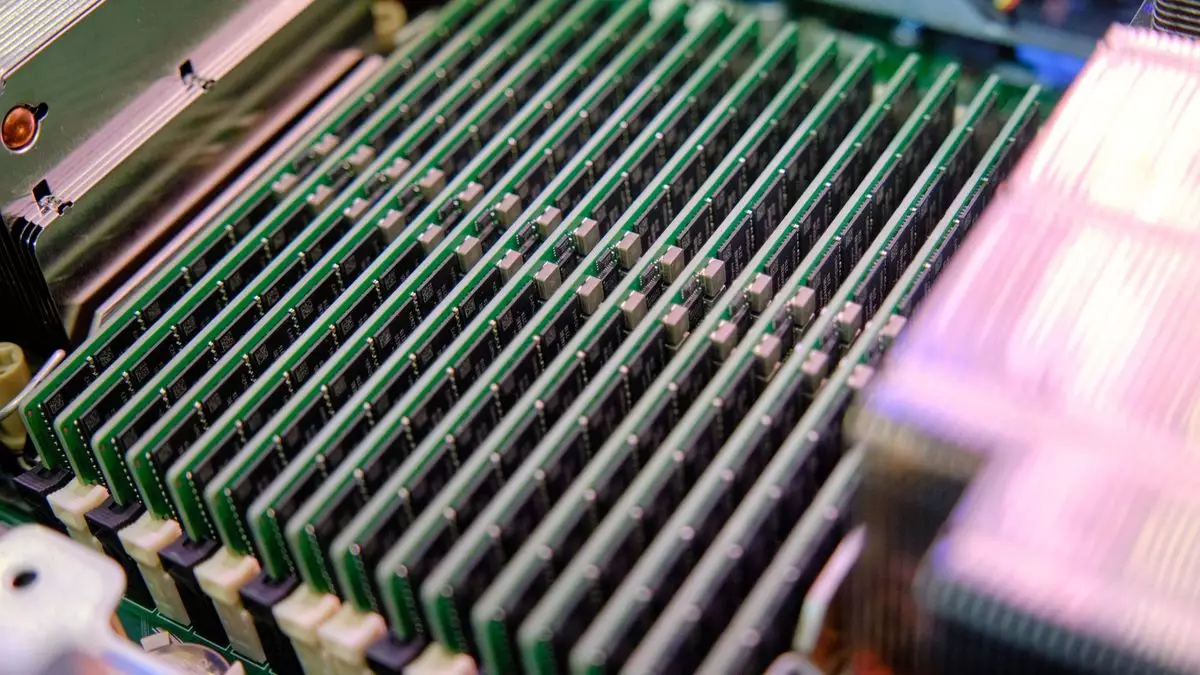In the landscape of cloud computing, security is paramount, and AMD’s Secure Encrypted Virtualization-Secure Nested Paging (SEV-SNP) is one of the technologies that aims to safeguard sensitive data in virtual environments. This mechanism was designed to enhance the integrity and confidentiality of virtual machines (VMs), ensuring that access to data is rigorously controlled. However, recent discoveries have raised serious concerns about the security of this technology, signaling potential vulnerabilities that could be exploited through creative hacking techniques.
Recent research conducted by a group of cybersecurity experts has unveiled alarming possibilities concerning SEV-SNP’s robustness. As detailed in a paper titled “BadRAM: Practical Memory Aliasing Attacks on Trusted Execution Environments,” the researchers discovered that vulnerabilities lie within the memory management systems associated with SEV-SNP. They utilized a Raspberry Pi Pico, a low-cost microcontroller, to manipulate DDR4 and DDR5 Serial Presence Detect (SPD) data. This manipulation enabled them to create “memory aliases,” which can be exploited to alter memory mappings and potentially compromise the security of encrypted data.
Such attacks can lead to catastrophic end-to-end breaches, allowing attackers to corrupt or replay ciphertext. Essentially, a breach could jeopardize the data integrity of entire virtual environments, which is significantly concerning for organizations that rely on these technologies for secure cloud operations.
Intriguingly, the hardware required to execute such an attack is relatively affordable and accessible. The estimated cost of the necessary equipment, including the Raspberry Pi Pico and DDR sockets, is merely around $10. Additionally, those with a penchant for technology may already possess many of these components. While an attacker would require physical access to the hardware, certain scenarios could provide opportunities for exploitation without raising suspicion. For example, a malicious insider at a cloud service provider could carry out an attack without leaving an overt trace, raising the stakes for numerous organizations operating in cloud infrastructures.
The implications of this vulnerability extend far beyond academic interest. The situations described in the research underscore a pressing need for organizations to reevaluate their security practices, particularly when fielding cloud services that depend on technologies like SEV-SNP. The paper indicates that common commercially available memory modules could present unguarded access points, making them susceptible to these newly unveiled attacks. As stated in the research findings, “two Corsair DDR4 DIMMs taken off the shelf left the base configuration entirely unprotected.”
This revelation poses daunting questions: How many organizations are at risk due to lax security measures? Are employees aware of the very real threat that such attacks represent? These queries highlight a critical junction at which technical vulnerabilities converge with human factors, necessitating a holistic approach to security that includes training and awareness for employees.
In light of these findings, AMD has categorized the situation as a medium-severity issue, assigning it a severity rating of 5.3. Fortunately, a remedial solution is available. AMD recommends that organizations secure their memory modules by entirely locking SPD and adopting stringent physical security measures. These recommendations, while straightforward, emphasize the necessity for proactive measures to prevent unauthorized physical access to critical hardware.
Organizations should consider investing in comprehensive training for their staff, particularly those involved in the operation and management of cloud services. A well-informed team can act as a primary line of defense against security threats, and an organizational culture that prioritizes security can lead to a more resilient infrastructure.
The unveiling of vulnerabilities within AMD’s SEV-SNP demonstrates the ever-evolving threats in the realm of cloud computing. As organizations integrate more sophisticated technologies to protect their data, it is crucial that they remain vigilant and responsive to identified risks. By ensuring robust physical security and leveraging available technological defenses, organizations can not only safeguard their virtual environments but also foster a culture of security awareness that fortifies their defenses against potential breaches. As the digital landscape continues to evolve, so too must the strategies employed to protect it.

